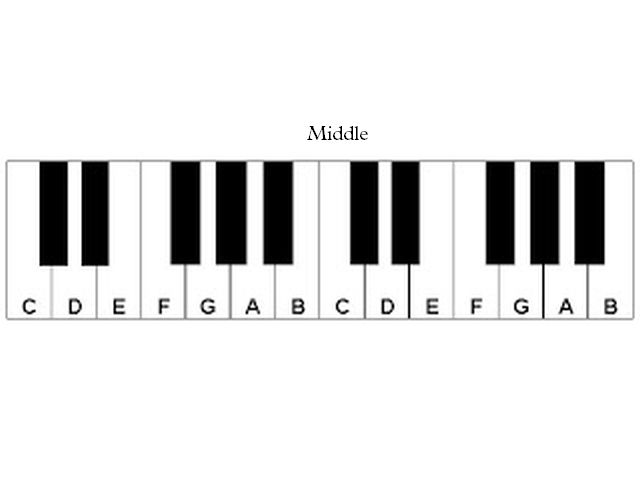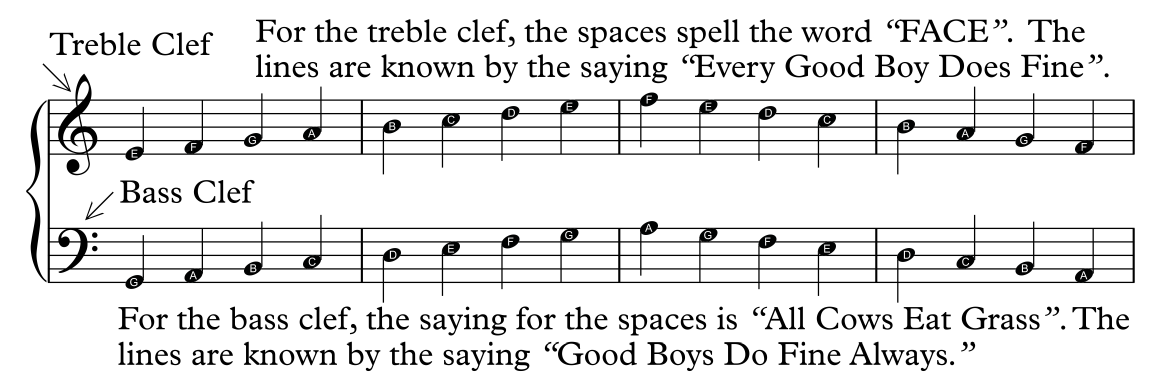Introduction to Music
for those wanting to become musicans, or improve their musicianship
 Basic Notation, Part 2
Basic Notation, Part 2
To review from our last posting – Basic Notation, Part 1 – refer to the grand staff shown here.. We have staffs made up of lines and spaces. We have two clefs, the treble for the high notes and the bass for the low notes. Each line or space has a letter name that belongs to a specific pitch and a specific location on the keyboard. Those letter names can also refer to a specific fingering for your instrument. As you go higher in the staff (toward the top of the page), the letter names go forward in the alphabet (remembering to start over with A once you reach G). As you go lower in the staff (toward the bottom of the page), the letter names go backwards in the alphabet.
The grand staff is used primarily in keyboard music (piano and organ). It is also used in harp, some percussion and handbell music. We will use the grand staff for examples so that both clefs are shown. (Not every instrument reads the treble clef). We also show it so that you learn both clefs. Unless you play a keyboard or harp instrument, you will only see one clef in your music. Focus on learning that staff’s notes, but don’t ignore the other one. (Viola players, I haven’t forgotten about you. We’ll talk about the Alto clef later).
As you will see in future sections, some notes extend pass the staff in either direction. They have a little line going through them or just above or below them. These are called Leger Lines. Think of them as a 6th, 7th, 8th or more line temporarily added to the 5 lines and 4 spaces that are always present. Since the lines and space in a staff refer to specific pitches, it is impossible to represent all pitches with just 11 notes. (The 11 being the 4 spaces, 5 lines and 2 spaces on either side of the staff). So, we have to add lines and spaces above or below the staff to represent those notes.
Memorize all the letter names in the two staffs. Remember that the notes on the staff refer to a specific location or fingering on your instrument. For example, the first line in the Treble Clef, E, is the note E two higher than Middle C on the piano and only that “E”, not other “E”‘s on the piano. Use the sayings to help with your learning. Remember, as you go up, go forward in the music alphabet and as you go down, go backwards in the music alphabet.
Next time, Note and rest values and rhythm.

